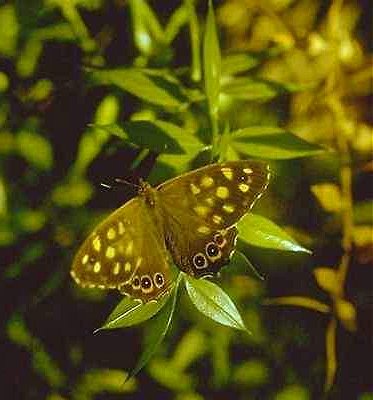
Pararge aegeria (Linnaeus, 1758) - Speckled Wood.
As far as I remember from a digest in a Russian popular
journal "Science and Life", it was found out that this
species exhibits a kind of justice. Males of many butterfly
species, especially Satyridae and Lycaenidae, occupy individual
perches and try to chase out any invadors, their maches as well
as birds and other larger creatures. P. aegeria lives under the
forest canopy, its males occupy illuminated spots on the ground
and try to chase other males passing by entering into a mutual
swift and rolling flight, after which one male returns to the
spot while the other escapes. It turned out that most frequently
the returning male is the same male which occupied the spot
before the encounter, not "the strongest one". The authors were
said to speculate that as light spots are numerous and are not a
limited resource the butterflies can afford themselves "to be
fair". But I have no idea what for and how such a fairness could
have been established. I believe the human altruism and sociality was of
advantage in a Darwinian sence in early hominid evolution, while
justice appeared much later as their extension in a creature
having already acquired an intellect. Nothing similar can be
imagined for butterflies.
Range: Europe, Asia Minor, Syria, Central Asia.
ssp.: tircis Godart, 1821; range: Eastern Europe, Caucasus, Transcaucasia, Central Asia.
A male; wings open.
A juniper/oak parkland on the Black Sea coast at the settlement Simeiz, Crimea, Ukraine. 29th June 1991. O. Kosterin.
